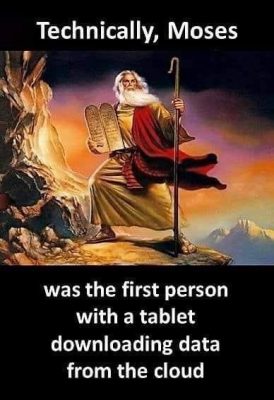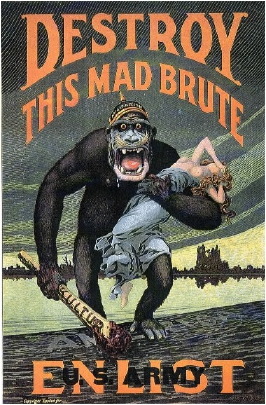
Egyptologists and Biblical scholars treat the Exodus differently. They approach the idea of an historical Exodus from different assumptions and perspectives and they respond differently to new information about the Exodus. In this blog, I present a speculative case study on how the two disciplines will react differently to the same information drawing on my own book, The Exodus, An Egyptian Story.
The information for this comparison derives from the life of Moses as an Egyptian before he fled from Ramses into the wilderness (in the book) and encountered the Kenites (not in the book). Specifically,
1. Moses helped plan and organize Seti’s campaigns against the Shasu and the Canaanites.
2. Moses was popular with the Egyptian military.
3. Moses was probably 10 to 15 years older than Ramses (not mentioned in the book).
Based on this information derived from Egyptian sources, how would Egyptologists and Biblical scholars react?
EGYPTOLOGISTS
As previously stated, Egyptologists avoid the Exodus like plague. No Egyptologist wants to jeopardize their academic careers by delving into the historicity of the Exodus. They can accept based on Manetho and Donald Redford, that it has something to do with the Hyksos, but beyond that tidbit, they do not wish to get involved.
In the previous blog (Passover and Pharaoh Smites the Enemy), I presented information from Kara Cooney in her new book The Good Kings: Absolute Power in Ancient Egypt and the Modern World. She expresses the normally academically taboo of having changed her mind about a fundamental truth in her discipline. She refers to herself as a recovering Egyptologist from an abusive relationship. In Egyptology, she is referring to the traditional acceptance of the concept of maat in a positive sense while overlooking or being blind to the violence it legitimizes by Pharaoh in the real world.
Ramses and the Exodus figure in her study. She asserts that Ramses tried to convince the populace that he was truly what he said he was. At the Battle of Kadesh, we are to understand that if it had not been for the heroics of Ramses combined with the blessings of Amun [whom Ramses beseeched], that Egypt would have lost. Cooney claims that Ramses compared himself to Seth, the god of violence who the Egyptians believed could vanish Apophis, the force of chaos, every night in the seventh hour [when as it turns out, the historical Passover occurred]. Cooney adds that we can be sure that some of the military knew the complicated truth, particularly the ones who were there at the battle. [In my book, I cite other Egyptologists making that same claim and would have included her if her book had been published earlier. The military people who knew the truth were the ones who either participated in the Exodus or who allowed it to occur without interfering.]
According to Cooney, Ramses portrayed himself in innovative ways not previously seen before in a Pharaoh. He appeared in the company of his men, driving his horses into the maelstrom of battle, even getting off his chariot and fighting hand-to-hand with his sword. Strategically, this Ramses positioned himself as the direct patron of Egypt’s mercenaries. This depiction is part of new development within Egyptology where the Delta in general and the military in particular are described as “diverse,” an equivalent of “mixed multitude.”
Finally Cooney daringly states that “This zeitgeist is an origination point for the Exodus story in the Hebrew Bible….I am not saying that Ramses II was the pharaoh of the Exodus or that such a series of events actually happened in reality, supernaturally aided or not. But I am saying that the biblical narrative holds kernels of truth” (243-244). To the best of my knowledge Cooney is neither an evangelical Christian nor an Orthodox Jew and she still is in good standing as an Egyptologist despite situating a possible historical Exodus in a real-world Egyptian context.
Now Cooney has the opportunity to take the next step as an Egyptologist and incorporate new information/interpretations. She writes of Ramses excelling in the art of spin and hyperbole (211). Her Ramses seeks to be like Maximus Decimus Meridius in Gladiator (239). She asks “What kinds of insecurities was this king hiding?” (212). Now she has the answer. As suggested in the three points above, Moses was Maximus while the younger Ramses was Commodus. The Sun God lived in the shadow of the man Moses his entire life. Ramses acted exactly the way Cooney describes and had the exact insecurities she asked about and the Exodus did occur precisely in the zeitgeist she portrays at the hour she mentions without realizing it. The missing ingredient that pulls the pieces together into a coherent narrative is Moses. With Moses, she can build on her presentation to tell a fuller story about Ramses than she does without him. The existence of Moses does not threaten her paradigms or standing as an Egyptologist; it enables her to be a better one by applying this new information/interpretation from a book she has read and for which she has written a recommendation.
BIBLICAL SCHOLARS
The situation is quite different for biblical scholars. Consider the following interpretations which are legitimate in scholarship today:
1. The Israelites were Shasu.
2. The Israelites were nomads.
3. The Israelites were revolting Canaanites.
4. The Israelites were Canaanites of long duration filling a void.
5. Israel did not leave Egypt, Egypt left Canaan.
6. There was not one Exodus but multiple teeny-weeny exodii.
7. A teeny-weeny “Pilgrim” exodus group spread its experience to all Canaan.
8. The Exodus story was (piously) concocted in Exilic times.
9. The Exodus story was (piously) concocted in Post-Exilic times.
10. The Exodus story was (piously) concocted in Hellenistic times.
Has anyone suggested Roman or Byzantine times yet?
All these legitimate interpretations within biblical scholarship share one trait in common – they reject the very notion of “Yahweh led thee out of the land of Egypt.” It’s as if any explanation for the American Revolution is acceptable as long as it does not include the words “life, liberty, and the pursuit of happiness” except as something concocted centuries later.
Now consider the opportunity available to biblical scholarship following the same information available to Cooney. When Moses flees to the wilderness he does so as one who previously had organized, planned, and participated in a campaign against the Shasu. He is no Sinuhe. He already knows the name “Yahweh” but “led thee out of the land of Egypt” is his new hope, vision, and political goal.
Moses does not encounter the Kenites by chance. These smiths are the one neutral or protected people among the various Shasu tribes. They offer him a sanctuary or safe haven. Moses marries into/is inducted into the Kenite tribe. He now has the mark of Cain which renders him safe from those he had fought as a Hyksos Egyptian under Seti. At this point Moses does not expect to be wandering in the wilderness when he leads people out of Egypt against the will of Ramses. Some of the Shasu decide to assist Moses in his effort against Egypt. Later they will become Calebites and be included in the Exodus narrative alongside those who did depart from Egypt. The kingdom of Judah under David thus will be an odd combination of Canaanite Jebusites (Elyon) who had been allies of Egypt, Amorite Benjaminites (Shaddai) who had been part of the Exodus from Egypt and had a Mesopotamian orientation, and Shasu Calebites (Yahweh) who became allies of Israel during the Exodus.
This scenario was not in my book. That study was limited to Egyptian sources. This reconstruction partakes of biblical exegesis which would have added a whole new dimension to the book and made it much longer. However it does reveal the opportunity available to a biblical scholar if one should abandon one of the accepted Exodus paradigms listed above.
A recent article “Was King David a Nomad. New Theory Sparks Storm Among Israeli Archaeologists” by Ariel David (Haaretz), highlights the challenge. He writes: “Most scholars agree that the preceding stories [to David] in the Bible, such as the Patriarchs cycle and the Exodus are not historical events and are essentially foundation myths.” Exactly. That is the paradigm from which one must not deviate if one is to be taken seriously within biblical scholarship.
An example of this restriction may be seen in the current issue of Biblical Archaeological Review. Daniel Master, Wheaton College, has an article “Piece by Piece: Exploring the Origins of the Philistines. The article is not about the Exodus but is reflective of biblical scholarship towards the Exodus. Master makes three claims in the article.
1. based on the archaeology, the Philistines came from Crete.
2. based on archaeology, the Philistines remembered their Cretan origin centuries later even after they had assimilated with the 12th century BCE population.
3. based on textual information, Israel also remembered the Philistine origin in Crete.
The unstated implication of the analysis is that is that if both the Philistines and the Israelites could remember the Philistine migration from Crete, why couldn’t Israel similarly remember its departure from Egypt? Of course, Israel could and did. So while Egyptologist Cooney can directly posit an historical Exodus in the zeitgeist of Ramses II, Master only implies that one occurred.
THE ANOMALY
An anomalous situation may develop. Theoretically, Egyptologists can accept as legitimate an historical reconstruction of a Moses-led Exodus against the will of Ramses based on Egyptian evidence that is not trying to prove the Bible true because it does not threaten any deeply held Egyptological attitudes towards the event. By contrast, biblical scholars cannot accept as legitimate an historical reconstruction of a Moses-led Exodus against the will of Ramses based on Egyptian evidence that is not trying to prove the Bible true because it does threaten deeply held biblical scholar attitudes towards the event as listed above.
As long as Egyptologists continue to avoid the Exodus like the plague, there is no problem for biblical scholars. The more Egyptologists are willing to accept as legitimate an Egyptian based historical reconstruction of the Exodus, the more the onus shifts to biblical scholars as to why they cannot. Obviously the disruption to the timeline of Israelite history and writing of the Hebrew Bible would be significantly affected if an historical reconstruction of the Exodus in the time of Ramses is accepted as legitimate. The revised “Kenite Hypothesis” described above is just the tip of the iceberg of the potential changes which would follow. So the question becomes not whether this historical construction is correct, but if it is even legitimate based on the Egyptian, not biblical, evidence.






